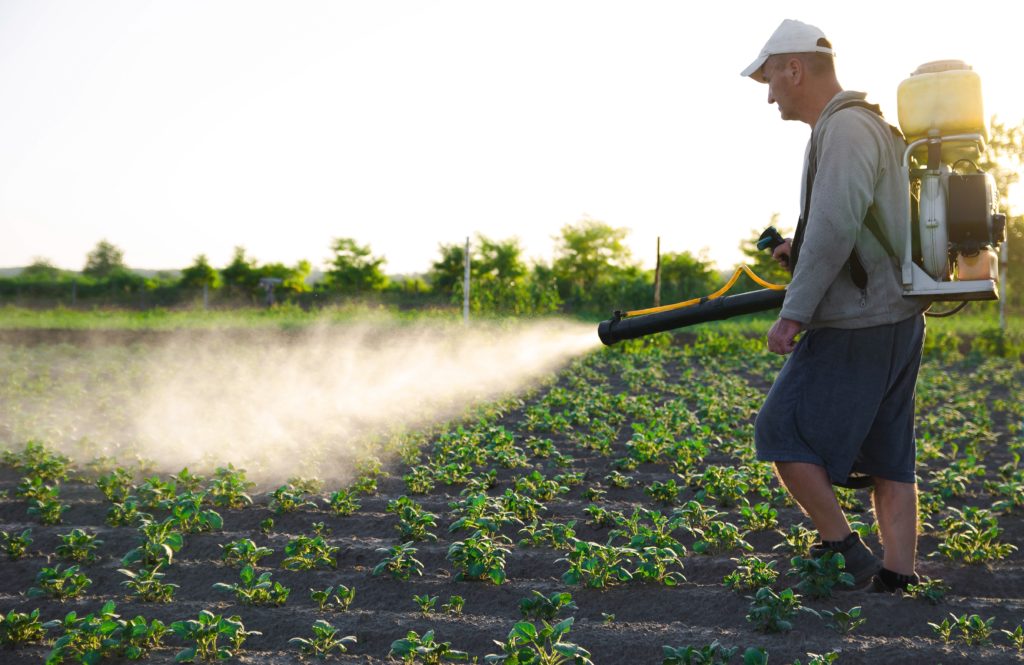Perhaps popularized by the COVID-19 vaccines, RNA-based technologies now have the potential to become the next best pesticide to combat crop pests, like insects and fungal pathogens. Over the last year, researchers have been studying the effectiveness of RNA-based pesticides, and there are already a handful of sprays in the works. So, how do they work and what advantages do they have over traditional chemical pesticides?
What are RNA-Based Pesticides?
The discovery of the insecticidal properties of dichloro-diphenyl-trichloroethane (DDT) in 1939 gave way to the modern era of crop protection, leading to the development of resistance by many insect pest species. But for much of their history, pesticides have been subjected to scrutiny due to their possible negative effects on human and animal health.
Residue from existing pesticides can build up in the environment and damage non-target organisms, while their overuse can lead to pests developing resistance. This can result in lower crop yields for farmers, complicated pest management strategies and increase operating expenses. Notably, a single species of fungus, Botrytis, is responsible for an estimated $10 billion in damage to crops each year.
Related: Burger with a Side of Phthalates: New Study Finds Harmful Chemicals in Fast Food Items
Ever since pesticides became widely used in agriculture, scientists have been searching for ways to improve upon pest protection for both human and planetary health. RNA interference (RNAi) is one such improvement that earned the scientists responsible for its discovery a Nobel Peace Prize in 2006. RNAi precisely targets, then turns off, specific genes inside a cell. It is a powerful technique that has many possible uses in biotechnology, medicine and, now, pesticides.
Advantages of RNA-Based Pesticides
RNA-based pesticides boast several advantages over traditional chemical pesticides. They are effective, efficient and can be designed to target a specific pest. Because they would target genes specific to individual species, there’s a much lower chance that other organisms would get caught in the crossfire. And unlike chemical pesticides, RNAi functions to prevent an essential protein from being made in the first place.
Since pathogens and pests are the largest threat to agriculture production, some studies suggest that RNAi can be used to silence essential gene functions in pathogenic microbes, which can be viruses, bacteria or fungi. One of the earliest examples of this comes from Cornell University in 2015, where researchers showed that an RNA-based spray can kill the Colorado potato beetle, protecting potato plants for up to one month. The insecticide inhibits expression of the gene encoding actin, a key protein involved in muscle contraction, often killing the beetles.
Scientists have been working on the development of RNA-based pesticides for several years. In 2017, Monsanto Co. received approval from the US Environmental Protection Agency (EPA) for an RNAi targeting the important insect pest corn rootworm. Despite its effectiveness, RNA production costs were high, totalling a minimum of $600 per gram.
Now, several approaches have drastically driven down the price, making it commercially feasible to develop RNA-based pesticides for the agriculture industry. GreenLight Biosciences, for example, has an RNA spray targeting the Colorado potato beetle that is currently being evaluated by the EPA. RNAissance Ag is another company working on a spray that targets the diamondback moth, which has already evolved some resistance to common pesticides.
Development of RNA-based pesticides is an important example of transferring recent scientific advances across industries. While they are unlikely to fully replace chemical pesticides, RNA-based pesticides are poised to become an important tool in the world of pest control and provide farmers with alternative choices for their integrated pest management strategies.












Join or login to leave a comment
JOIN LOGIN